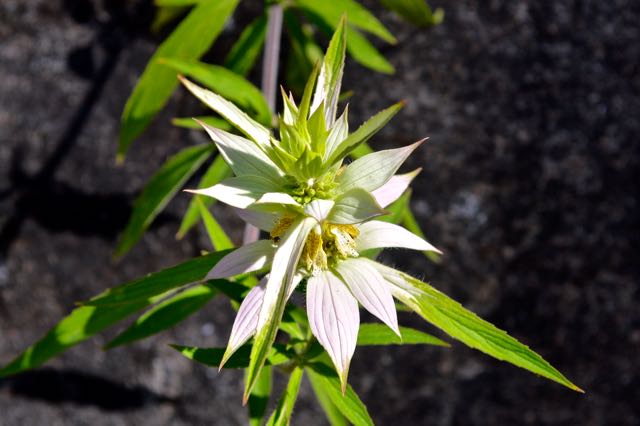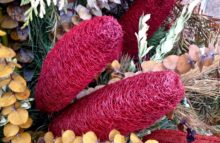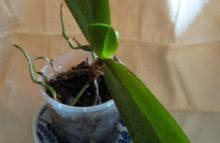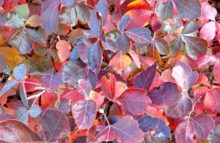Ah, common names! Here’s a plant with many: spotted or dotted mint, spotted or dotted beebalm, horsemint and spotted horsemint (and possibly even dotted horsemint), for example, all with the botanical name Monarda punctata. No, it doesn’t look like your typical monarda, does it?
Whatever you call it, you can call it great for native bees. Pollinators are said to love it.
It’s also one of those sun-loving native plants that might do well on the margins of sun and shade. Some websites describe it as requiring sun to part-shade. My guess is that the more sun, the more compact, floriferous plants.
Even better, it doesn’t mind dry soil! Great news in this droughty summer of 2016.

We saw this in a USDA Zone 4/Canadian Zone 5 garden during the Minneapolis Garden Bloggers Fling. The gardener was gradually removing plant interlopers such as common buckthorn (Rhamnus cathartica), which is also a non-native space-invader in Ontario, and replanting with Minnesota native plant species. Many of these would be native to our local ecosystem, too. Much of Minnesota, like much of Southern Ontario, was originally oak savannah.
Find detailed info on spotted beebalm at these links to wildflower.org and to the Eloise Butler Wildflower Garden, the oldest public wildflower garden in the United States, which we also visited on the Fling.
Though some sources say it can be short-lived, it often self-seeds. Wildflower Farm carries it if you’d like to try growing your own from a local seed source.
I’ll be sharing this on Gail Eichelberger’s Clay and Limestone for her Wildflower Wednesday meme. (For me, it’s a Wildflower Saturday. But I’m rebellious that way.) Check out Gail’s blog to learn how other gardeners are growing wild in all parts of the continent.





8 comments
One of my favorites (of course they’re all my favorites when it comes to wildflowers). So glad you decided to celebrate wildflowers and joining in on a Saturday is cool with me! xogail
Thanks, Gail. The comments over on Facebook give Monarda punctata big thumbs-up. One commenter says, “covered in pollinators.” All of which confirm that this is a good one to try. I have a few sunny patches, so will probably give it a go.
I loved this one – what’s funny is that it looks a LOT like the lemon bee balm (Monarda citriodora) that I’m growing. When I first grew it and saw the bloom, I was rather surprised that it didn’t look like the traditional bee balm.
Margaret, I’d never heard of Monarda citriodora till you named it here. Just looked it up, and while it looks similar with the pinky bracts, the actual flowers on your plant are purple, not yellow. From the yellow flowers, you’d almost expect M. punctata to have a “citrus” sounding name, wouldn’t you?
It is very pretty!
Have a great week!
Lea
Thanks, Lea, and thanks for dropping by.
Another new to me plant! It’s interesting the way it has kind of a triple-decker bloom. A belated Happy Wildflower Wednesday!
Rose, it’s the first time I’ve actually seen it in real life. It is really cool, and I love its triple-deckeredness.